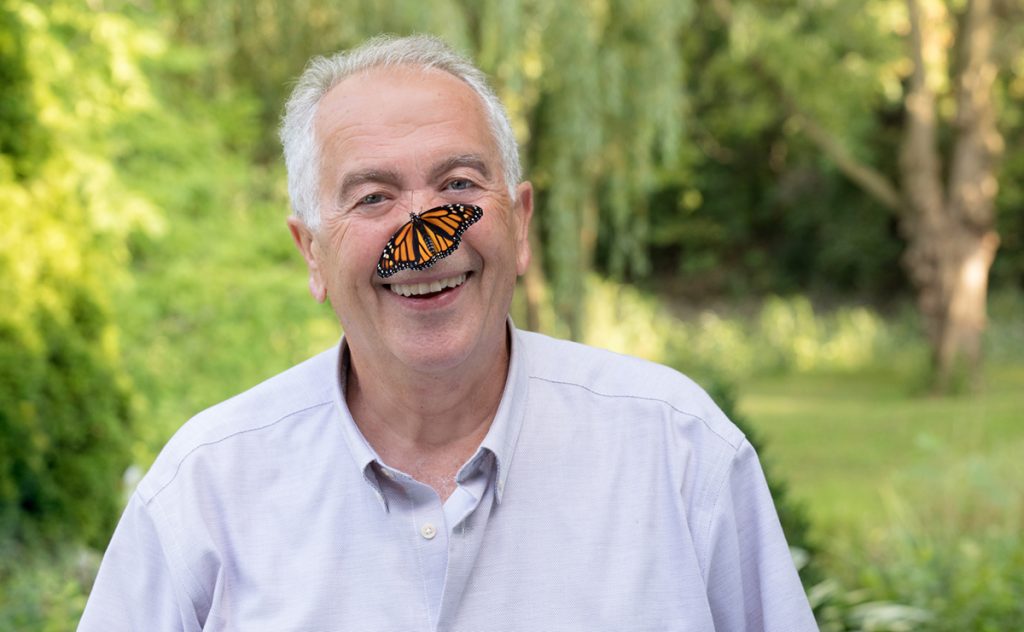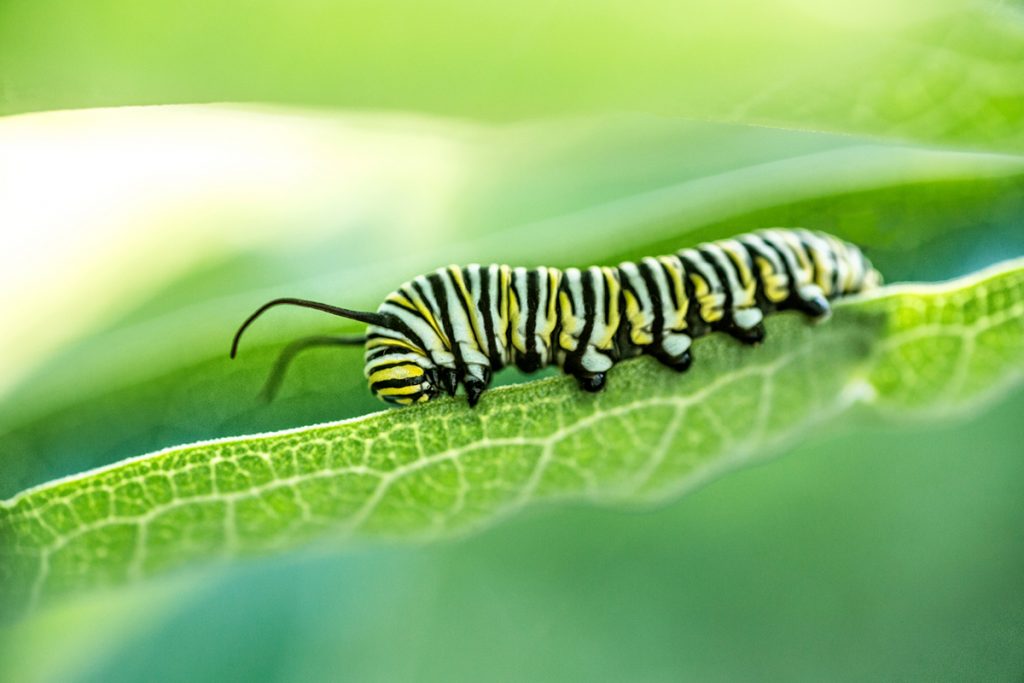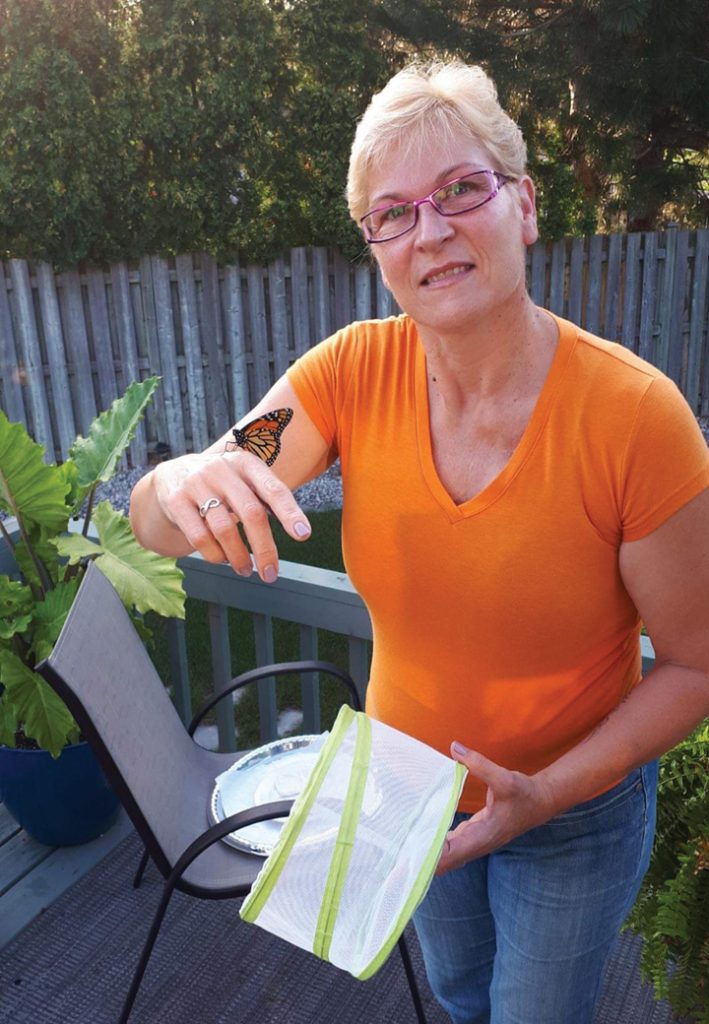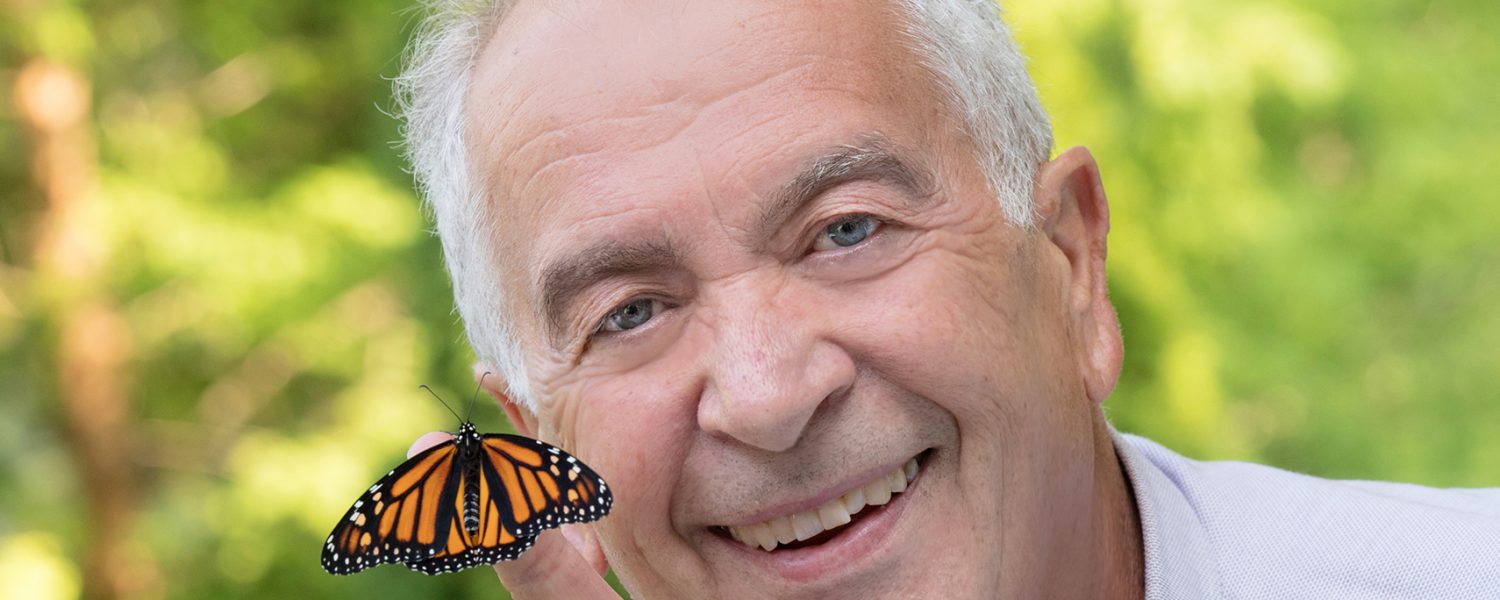One Man Inspired Thousands To Help Monarch Butterflies Flourish In Essex County
Story by Matthew St. Amand
Photography by Chalet Studio & Gardens
It’s a common dilemma: a person seeks positive change in the world, but oftentimes the challenges appear too great and overwhelming to even approach. An Essex County Facebook group, dedicated to the preservation of monarch butterflies, has found an easy, enjoyable way to make our corner of the world a better place.
Adult monarch butterflies are among the most recognizable butterfly genus. According to the World Wildlife Foundation (WWF), they are an endangered species. Every autumn, monarchs embark on an annual migration from southern Canada to the mountain forests of Mexico—a journey of approximately 4,000-to-5,000 kilometres. Fairly incredible for an organism with a wingspan of 7-10 cm and weighing less than 0.5 grams.
Anyone wondering if they are seeing fewer monarch butterflies in recent years is not imagining things.
“There are three major reasons why we’re seeing fewer monarchs,” say Leo Silvestri, creator of the Facebook group “Monarch Butterfly Enthusiasts of Windsor and Essex County” which has 2,749 members. “Loss of habitat in this area because of pesticides and housing development, is one. Climate change is another. And illegal logging in the Mexican mountains, is the third.”
He continues: “We cannot save the whole world. Everyone is in their own city. The only thing we can do to help the monarch butterfly is what we’re doing: planting milkweed and nectar-rich flowers.”

As Leo’s conversation with Windsor Life unfolds, it is easy to assume he has been working on environmental matters for much of his 60-plus years. When asked about this, Leo chuckles and says: “I’m a house painter.”
His interest in butterflies began in 2017. While in his backyard, one day, he noticed a large, green worm crawl out of his parsley plants.
“He was wandering on the cement,” Leo recalls. “I thought a bird would see him and take him, so I gently put him back in the parsley. After a while, I saw him back on the cement. ‘Why does he keep going on the cement?’ I wondered. I went to Google and typed in ‘Why does my green worm want to leave my parsley plant?’ and I saw in the Images all kinds of green worms like mine.”
Leo learned that the green worm was a caterpillar. He joined a Facebook group dedicated raising and releasing butterflies.
“In the spring, I built some small habitats of my own, and planted parsley,” Leo remembers, “and sure enough, butterflies showed up and laid their eggs. I went to Google and typed in ‘butterfly.’ That’s when I saw the picture of a monarch. Every website I went to was about ‘save the monarch’, ‘help the monarch’. ‘What is so special that this butterfly wants?’ I wondered.”
Monarch butterflies feed on, and lay their eggs on milkweed. When he learned this, Leo sought out milkweed like it was a magic elixir. He ordered two plants, online, and eventually bought eight more, locally, when he discovered it is recommended to have 10 plants to provide enough food for butterfly larvae.
“In the first week of September, as I was watering a flower in front of the house,” Leo says, “I saw a big monarch caterpillar on the milkweed. I got excited and my wife, showed some friends who were over for dinner. I put the caterpillar into an enclosure I had built in my garage. A few days later, it went to top of the enclosure and formed a chrysalis. Within 10 days, I saw this beautiful butterfly.”

Leo created the “Monarch Butterfly Enthusiasts of Windsor and Essex County” Facebook group in January 2019. Membership grew at a steady rate. Currently, there are almost 3,000 members. On any given week, there are between 800-1,000 posts, with dozens of pictures going up.
One of these members is Tricia Drouillard. She became involved with monarch butterfly preservation after her brother shared his efforts with her.
“I remember as a child, there were butterflies everywhere in the summertime,” Tricia says, “but you don’t see that many, anymore.”
Tricia continues: “Last year, I visited my brother. He had milkweed growing in all these containers. ‘What are you doing?’ I asked him, and he said: ‘The monarch butterflies are disappearing because the milkweed is disappearing.’ He showed me his process for helping monarchs, that takes caterpillars into becoming butterflies.”
Impressed by her brother’s progress, Tricia decided to give it a try. Her brother told her about Leo’s Facebook: “I’ll put you on this site with me so you can see what other people in Essex County are doing.”
Her brother sent Tricia home with a milkweed plant for her garden. With guidance from Leo’s Facebook group, she began checking the milkweed leaves for monarch butterfly eggs.
“When I find one,” Tricia explains, “I cut a small piece out where the egg is and bring that into the house. I leave the rest of the leaf there so it will grow, and I will have a leaf when I need it. Caterpillars eat milkweed, and they eat more than you’d think!”
Tricia places the eggs in aluminum platter trays she keeps covered with screen covers usually used to cover food. Each day, she mists them using a spray bottle of water and provides milkweed, as needed. The entire process, from egg, to caterpillar, to chrysalis, and finally into a monarch butterfly, takes approximately 30 days.
“To see how fast they grow,” Tricia says. “Just out of the egg, you can barely see them, and three days later they’ve grown so much. I’ll release 17 butterflies this year.”

In speaking about the Leo’s Facebook group, Tricia describes how one member repaired a broken wing on a monarch butterfly. That member was Sheena McKay. As it turned out, this wasn’t the first time she performed such a procedure. On a creature weighing, in total, a mere 0.5 grams, its wings are more fragile than paper. How does one mend something so delicate?
“I used a light cardstock and crazy glue,” Sheena explains. “Then I sprinkled the area with baby powder to make sure its wings didn’t stick together.”
The card stock is light enough to allow the butterfly full use of its wings.
Leo sums up the joy he experiences working to preserve the monarch butterflies this way: “You know what, if you put a monarch butterfly on your finger and release it, you will fall in love with what we’re doing.”
In 2019, the year Leo created his Facebook group, he released 1,000 monarch butterflies.
“Many people came,” he says, “grandparents, kids. We have a photo album of people who came to release butterflies. They all wanted to plant milkweed after this.”
This method of protecting the monarch butterflies greatly increases their odds of survival. According to Leo, for every 100 eggs the monarch lays in the wild, only one to three of them reach adulthood.
“The other 97 eggs are food for ants, spiders, wasps,” he explains, “all kinds of predators, ready to make that egg a meal. ‘Wait a minute,’ I thought, ‘if I bring them in, sure I’ll have the odd one that doesn’t make it, but 90 percent, or better, will end up flying.’” Leo liked those odds.
To learn more about what Leo and his group are doing, and how easy it is to help monarch butterflies flourish in this area, visit their Facebook group at www.facebook.com/groups/299958150869056.









Add comment